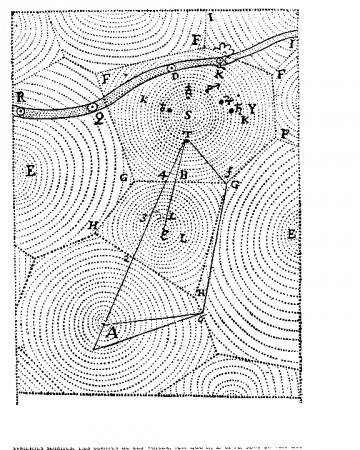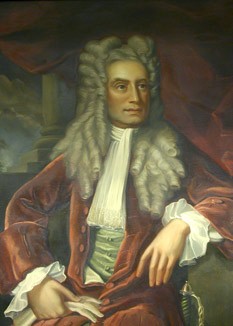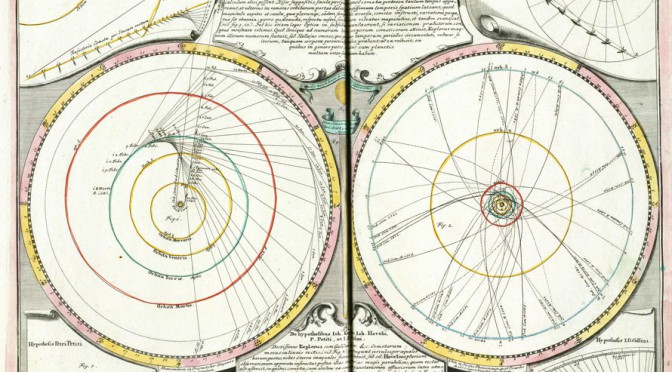Sequel of the preceding post A Brief History of Space (2/4) : From Ptolemy to Galileo
At the beginning of XVIIth century, the way was open for new cosmologies, constructed on the basis of infinite space. Until then, the notion of space was conceived in the cosmological and physical order of nature, and not as the “background” of the figures and geometric constructions of Euclid. In other terms, physical space was not mathematicized. It became so thanks to René Descartes (1596 – 1650), who had the idea of specifying each point by three real numbers: its coordinates. The introduction of a universal system of coordinates which entirely criss-crossed space and allowed for the measurement of distances was a reflection of the fact that, for Descartes, the unification and uniformization of the universe in its physical content and its geometric laws was a given. Space is a substance in the same class as material bodies, an infinite ether agitated by vortices without number, at the centers of which were held the stars and their planetary systems.

This new conception of the cosmos upset philosophical thought and led it far from the initial enthusiasm of the atomists and Giordano Bruno: “The absolute space which inspired the hexameters of Lucretius, the absolute space which that had been a liberation for Bruno, was a labyrinth and an abyss for Pascal.”[5] As for the scholars, they did not allow themselves to be discouraged by these moods and irresistibly moved towards the infinite universe.

The tendency toward the radical geometrization of an infinite space, initiated by Descartes, was consummated by the Englishman Isaac Newton (1642-1727). Newton postulated an absolute space, encompassing not only the background space of mathematics and the physical space of astronomy, but also that of metaphysics, since space was the “sensorium of God.” Physical space, finally identified with geometrical space, was necessarily Euclidean (the only one known at the epoch), without curvature, amorphous and infinite in every direction. At the heart of this immobile framework, Newton explained celestial mechanics in terms of the law of universal attraction, from now on considered responsible for gravitation and the large scale structure of the Universe. With Newton, cosmology took root for more than two centuries in the framework of an infinite Euclidean space and an eternal time.

All the problems are not resolved in Newtonian cosmology, far from it. On the question of the distribution of stars in space, for example, Newton believed that they must occupy a finite volume since, he argued, if they occupied an infinite space, they would be infinite in number, the force of gravitation would be infinite, and the universe would be unstable. Newton moreover supposed that the stars were uniformly spread within a finite mass|like a galaxy, for example. But a problem of instability remained: since each celestial body is attracted by every other one, at the least movement, at the least mechanical perturbation, all the bodies in the universe would fall towards a unique center, and the universe would collapse. Newton’s universe is therefore only viable if it does not admit motion on the large scale: its space is rigid and its time immobile. Continue reading A brief history of space (3/4) : from Descartes to Schwarzschild
